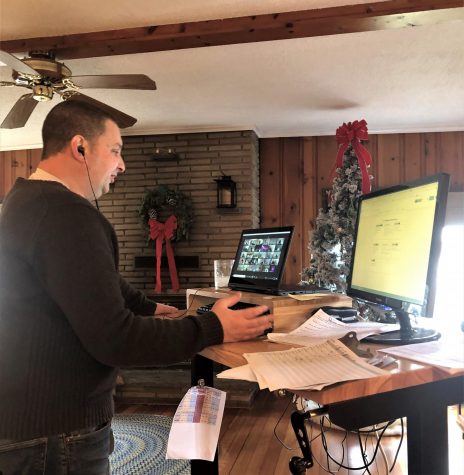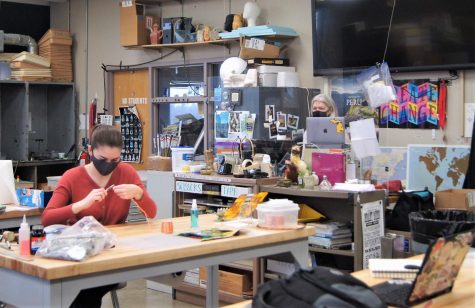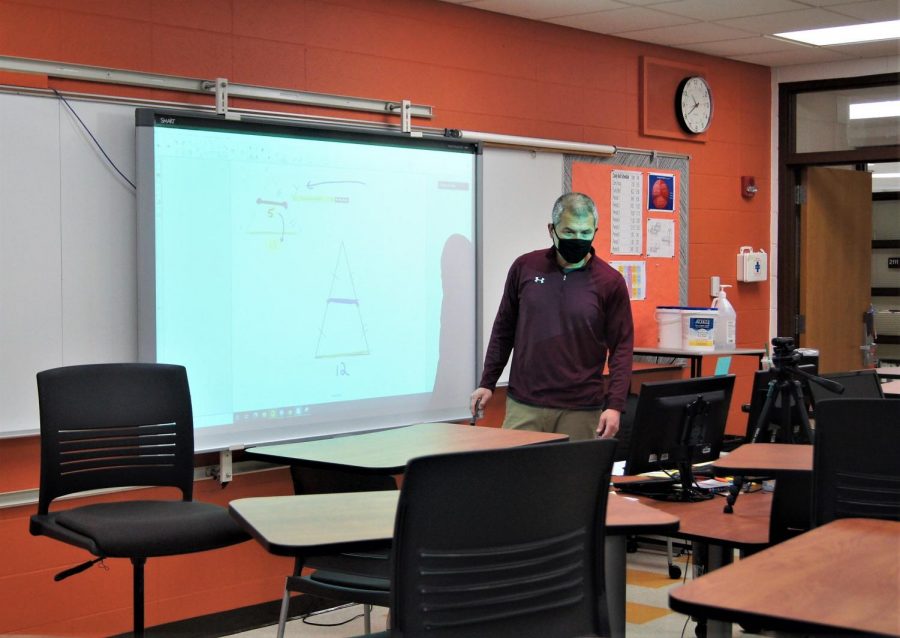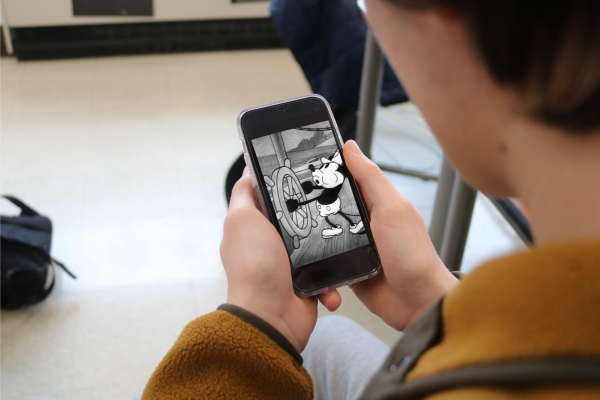Relearning how to Teach
This year, teachers have become students in navigating their way through e-learning for the first time. With school days becoming defined by screens, teachers and their curriculum plans have been forced to adapt to the restrictions of computer-based learning. Teachers must now account for physical disconnect and hyper-dependence on the internet, amongst other things, all while teaching through a small window on students’ screens.
Approaching the end of the first semester of e-learning, teachers have experienced roughly four months of this new teaching format. In the beginning, e-learning presented numerous obstacles for teachers to overcome. And while some have been resolved, teachers have expressed that a handful of challenges still remain.
Challenges
Scott Schinto, a physical welfare teacher, expressed that his greatest challenge has been technology. Before the school year even started, Mr. Schinto reached out to past students looking for opportunities to practice using Zoom. He expressed that these students “[came] to [his] rescue.”
Kevin O’Neill, a social studies teacher, shared another thought on technology, saying that something seemingly as simple as uploading an assignment “is now like an 18-step process.” He explained that getting assignments to students has gone from “a run down to the copy room” to a stressful process of ensuring that the information is not only correctly organized and easily accessible, but is even digitally legible.
Additionally, Mr. O’Neill shared that “connecting with the kids” has become a much more difficult task. He explained that while meaningful “minute interactions” (like asking students about their extra curriculars) are not totally unachievable, they’re “near impossible to replicate over Zoom.”
This struggle of creating interactions has also carried over into teachers’ abilities to aid struggling students.

“[It’s] been hard because I feel like one of my greatest strengths is when students are here in person, I can reach them and motivate them if things are not going well, and that’s been hard over Zoom. It’s really hard to have the same effect that you can in person,” expressed Tim Budge, a math teacher.
Other, less drastic challenges include the fair share of mishaps some teachers have had. From Mr. Schinto’s muted monologues to Mr. O’Neill accidentally posting an answer key alongside a test, e-learning has presented a variety of complications for teachers.
Similar to students, teachers have also faced a drastic increase in their screen time, both during and after school hours. Mr. O’Neill expressed that while he’s made consistent efforts to “unplug at home,” some demands, such as grading essays, still force him to return to the screen at later hours of the day.
Stress
With an abundance of new challenges, new stressors have been added onto some teachers’ agendas while others are experiencing heightened levels of stress. Mr. O’Neill shared that while his level of stress is only slightly higher than usual, “it’s a new stress that [he’s] not used to coping with.”
Julie Johnson, an art teacher, expressed that a majority of her stress doesn’t come from teaching but comes from “see[ing] some students who are really struggling entirely because of the e-learning situation.” Additionally, when discussing the process of creating her lesson videos, Ms. Johnson said that “there’s just not enough hours in the day” to manage everything.
Workload has also had a great impact on teachers as some have taken on additional tasks for the benefit of their students. In an effort to help his students, Mr. Budge has integrated non-restricted test and quiz retakes as well as the acceptance of late work for full credit. Done with the hopes of helping motivate his students, Mr. Budge described that this has resulted in a huge workload on his part.
Teachers noted that the administration, colleagues and students have been sources of support throughout this process, with many of them expressing gratitude for their efforts. Mr. Budge additionally expressed gratitude for the block scheduling and break in the middle of the day that is provided by office hours and lunch.
Success
While e-learning is not the preferred method of teaching, it has not been entirely restricted to challenges and increased stress levels—many teachers have experienced pockets of success and positivity. Mr. Budge shared that he’s experienced great success with creating camaraderie and class bonding within some of his classes. In her jewelry class, Ms. Johnson has taken advantage of the situation by integrating a master guest artist into the course who works with students on developing new ring-forming skills.
In his outdoor education classes, Mr. Schinto has been successful in getting his kids off of their screens by having them partake in creative assignments. In order to get his students outside and into the fresh air, Mr. Schinto has created “treasure hikes” in which he forms a list of random outdoor objects his students must find and photograph in order to complete their work.
Mr. Budge has also found success in student interaction on teacher-directed Wednesdays. He’s designated these days to individually help his students “whether it’s students that haven’t made up any assignments or students that are struggling in class.” He shared that this initiative started slower but has “gained some steam” recently, which he deems a success.
Hybrid/Future:
Looking into the future, teachers will have to adjust their methods once more with the beginning of the hybrid plan in January. Starting second semester, teachers will be required to teach students physically present in the classroom as well as students who will remain remote over Zoom.
Mr. Schinto shared that this “is a lot to manage.” He explained that “teachers are nurturers [that] want to make sure all [their] kids are functioning…engaged [and] enjoying class.” The split between screen and classroom adds a level of difficulty to this job by forcing teachers to budget their attention.
Mr. O’Neill said that while he is “super excited about being back in school with kids,” he has to remind himself that “it’s not going to be seeing kids the same as it was before” due to the absence of hallway greetings, reminiscing with past students, high-fives and even simply walking between desks.

Some classes, including a handful of Ms. Johnson’s, are already hybrid, so this shift won’t be as dramatic for her. However, this means she had already experienced, adapted to and learned from the strain of split teaching. One thing she noted was that hybrid is not a two-way split of in-person vs. remote students. It is more complex than that. She explained that she is teaching across three formats all at once, meaning she has to account for not only the two rotating hybrid groups but also the group of entirely remote students.
In response to the future, Mr. Budge expressed that he’s confident the shift will take an adjustment period but will ultimately be worked through, just as e-learning has been. While the unknown nature of the future does produce some anxiety, Mr. Budge believes it’s best to not overthink and remains hopeful that “we’ll figure it out.”





![Mr. Scott Brzezinski poses for a photo while working at ShurWay Moving in Libertyville where his cousin Mr. Eric Brzezinski also works. He appreciates that LHS prepares students for their future by providing a variety of opportunities. “[There are] a lot of different resources that LHS has between colleges and counselors,” he said. (Photo courtesy of Mr. Scott Brzezinski)](https://www.lhsdoi.com/wp-content/uploads/2025/02/Mr.-Scott-Brzezinski-Photo-2-600x600.jpg)

